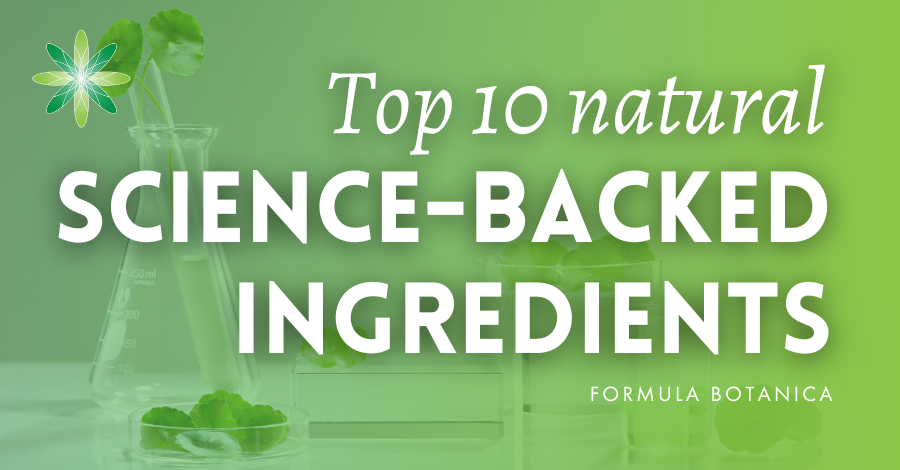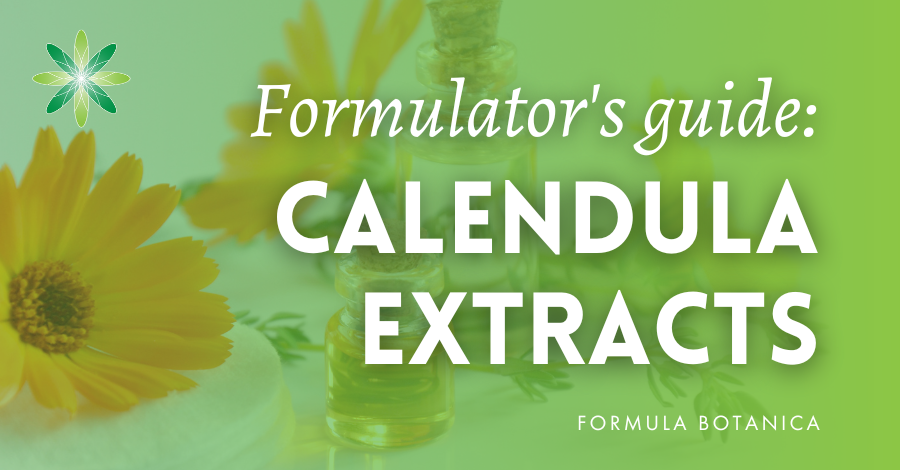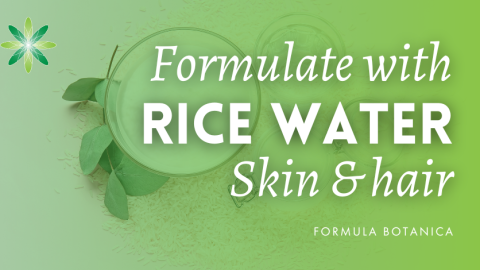One of the main questions we are constantly asked at Formula Botanica is: “which natural preservative should I use for my skincare formulation?“. There is no simple or standard answer to this question. In fact, it can easily become overwhelming to choose a natural preservative or preservative blend when you look at all the products available on the market and all the claims and promises made by suppliers and retailers.
We want to help you choose the right natural preservative for your skin, so we’ve categorised 16 points that you should keep in mind when choosing the right preservative for your natural skincare and haircare formulations.
1. Define the word “Natural”
There are 50 shades of natural – some people think of a natural ingredient as one which has been picked straight from a plant and undergone minimal physical processing, whereas others are happy to accept a degree of chemical processing for their natural ingredient. As long as you don’t have a clear definition and concept for the word ‘natural’, you are not going to be able to find a suitable preservative for your formulation.
You don’t want to end up in the situation that you start using a preservative, invest time and effort in making your samples and prototypes and then send your products for testing, only to realise that the preservative you chose doesn’t comply with your requirements.
Phenoxyethanol for example, is still tolerated and used in some natural formulations – despite it being synthetic. According to most associations and certifying bodies however, it is a taboo ingredient.
2. Organic Certification Requirements
If you are working to the specifications set by an organic certification body such as the Soil Association or Ecocert, then you should always make sure that your natural preservative complies with the standards set by that certification body. You can check Ecocert’s list of approved ingredients on their website.
3. Comply with the Law
Although many regions around the world follow EU legislation, there is still regional legislation elsewhere which sets other requirements for cosmetic ingredients and their maximum allowed concentrations. The toughest countries outside EU, when it comes to cosmetic legislation, are Japan and China at the moment. Make sure the natural preservative you choose for your products complied with the legislation of your target market.
4. Suitability for your Product
There is no such thing as a one-size-fits-all preservative. They all have their own limitations, particularly when we’re talking about natural preservatives. If you are looking for an effective natural preservative system, we recommend that you limit your choice. If you call your supplier and tell them you’re looking for a broad spectrum preservative for all of your products ranging from hair shampoo to anti-perspirant, then this would only confuse your supplier. They would most likely make a very general recommendation that is probably not the best option for you.
Choose your preservatives one at a time. You can test your preservative in several products to save time but when you’re asking your supplier for advice, start with the product (or product group) that has your highest priority.
The nature of your product plays a big role in your choice of natural preservative, particularly when it comes to legal limitations. Questions to answer include:
- Is your product water based, is it an aerosol or a sun care?
- Is it going to be applied to hair, around eye or on baby skin?
- Is it a leave-on or rinse-off product
- Is it a W/O or an O/W emulsion? Or a water based product such as a tonic?
5. Packaging
Unfortunately there is no packaging material commercially available that can completely preserve a cosmetic product (yet). However,the type of packaging you choose can certainly have an impact on your choice of natural preservative and the required dosage of that preservative.
For aerosols for example, there are legal limitations when it comes to preservatives. Some types of packaging allow less contact between the product and the consumer or less exposure of the product to air (airless dispensers for instance). When you’re choosing a natural preservative, you must consider not only the nature of the preservative but also its required dosage as it might vary, depending on the packaging form and material.
Apart from efficacy and dosage of the preservative according to packaging, the preservative should have no interaction with your packaging material. Product-packaging compatibility should be tested during the product development phase.
The internet myth that miron glass acts as a preservative and products filled in miron glass do not need any preservation is absolutely false. Miron glass can only protect the product against photo-exposure and photo-oxidation. It has no impact on the microbial preservation of a product.
6. Measure the pH
Most natural preservatives or ingredients used in natural preservative blends are weak acids. Salicylic acid, benzoic acid, sorbic acid and levulinic acid are just a few to name.
All these ingredients are poorly soluble in water as acids (this is why most of them are being supplied as the sodium or potassium salt: sodium benzoate for instance), but are only effective in acid form. This means that you’ll need the sodium or potassium salt to incorporate them into the product, but to make them effective you’ll need the acid form.
The final pH of the product, as well as the way you incorporate your natural preservative into the formulation, has a huge impact on the stability and efficacy of your preservative and whole product. After all, you can’t use a preservative for an alkaline product (such as a hair relaxer) in an acidic formulation (such as a chemical peel).
The pH affects the solubility and efficacy of the preservative and for most of the modern natural preservatives we use, we must consider the pH range when designing the formulation. If the pH is too low, then the natural preservative (or parts of it) could sediment, become ineffective or even destabilise the product. If the pH is too high, the preservative becomes ineffective.
So the main message is – before you trial your natural preservative, make sure its optimal performance pH matches the required pH of your formulation.
7. Solubility
Contamination mainly happens in the water phase or at the water/air or water/oil interphase of your formulations. If you want your preservative to be effective, it must contain some water-soluble ingredients.
When you’re formulating a water-based product such as a toner, your preservative should be completely water-soluble or you’ll need a solubiliser to incorporate the preservative into the system. You must also consider the optimum pH for solubility of the preservative (see point 6 in our checklist above!).
8. Compatibility with other Ingredients (and their Preservatives)
Some of your cosmetic ingredients are already preserved. Examples include some surfactants, hydrosols and plant extracts. Before you start to prepare your formulation, you must determine which and how much preservative is present in your ingredients. The natural preservative that you choose for your formulations must be compatible with the preservatives already present in your ingredients. You also have to consider the maximum legal concentrations of each individual preservative.
For example, imagine that your hydrosols and extracts contain benzoic acid. You are going to add those hydrosols and extracts into your formulation and you want to preserve the overall product with a commercial preservative that has the following INCI name: Sodium benzoate, benzyl alcohol, potassium sorbate
You now have to consider that the EU has set a maximum legal dosage for benzoic acid and its sodium salt:
- 2.5% acid in rinse-off products
- 0.5% acid in leave-on products
You now have to calculate the total amount of benzoic acid and sodium benzoate in your formulation. The total amount cannot exceed the legal limit.
9. Application Dosage and Cost
When you are choosing the right natural preservative for your formulation, you must consider its application dosage. It’s easy to think that you add a blanket 1% of a preservative to your formulation but actually application dosages for preservative systems vary between some 0.8%-4.0% for different preservatives.
These dosages are dependent upon the supplier’s recommendation and give you as a starting point. However, the realistic and effective application dosage should be calculated and tested while considering the packaging, the way the formulation is applied and all other possible preservatives coming to the system with raw material.
A higher application dosage of your natural preservative means higher volumes should be stocked at your premises which means higher investment costs and larger storage capacity.
10. MOQ and Shelf life
When you are an artisan skincare formulator, you must also consider the Minimum Order Quantity (MOQ) of your natural preservative. If you’re working at a small scale and the preservative you fall in love with is only available in MOQs from 100kg upwards, then it is clear that you won’t be able to use all of the preservative within its shelf life. You’ll have to choose another preservative or hunt around for a retailer who sells your ingredient in smaller quantities.
You can only justify a short shelf for your natural preservative if you can buy it in small quantities. You have to be sure that you can use all of the MOQ in a short period of time. If you store large quantities of an ingredient, it takes up valuable space in your storage area and it blocks money in your budget. Make sure you consider all of these points before you choose the right preservative for your natural skincare.
Access your free 16 point checklist to choose a natural #skincare preservative. #naturalskincare #DIYBeauty Share on X11. Sustainability and Ethical Sourcing
When choosing new skincare ingredients to work with, we want to make sure that they are sustainably sourced, have a low carbon footprint and have no ecological impacts. If you want to use a natural preservative which is imported from the other side of the world and potentially uses ingredients that might have environmental impacts, you will probably find that this isn’t suitable for an ethical green brand.
12. Spectrum of Activity
An effective natural preservative system should cover all possible contaminants that might be found in cosmetic products: Gram+ and Gram- bacteria, mould and yeast.
If your natural preservative does not cover any of these contaminant groups, you’ll need a complementary preservative. Unfortunately most suppliers boast a broad spectrum activity for preservatives that are not broad spectrum, or are only broad spectrum under certain conditions. You will need to test your preservative to check that it truly is broad spectrum and the only way to do that is by undertaking (outsourcing) a microbial challenge test.
We often hear from formulators who come to us and want to work with only antimicrobial preservatives such as Leucidal Liquid – however, you will most likely need a complementary preservative if you want your formulation to be properly preserved, as this preservative on its own is very unlikely to be sufficient.
13. Impact on Scent and Colour
Some natural preservatives (particularly those based on plant extracts) have an intense inherent colour and scent. We often hear from formulators in our Formula Botanica community who don’t want their preservative to have any fragrance because it impacts upon the overall formulation’s scent. However, many natural preservatives are based on fragrance compounds such as benzyl alcohol so it is very hard to avoid any fragrance in your preservative. You will need to shop around and test out different natural preservatives by undertaking the sniff test!
Having a smelly or colourful preservative imposes limitations to their applications in your formulation. These natural preservatives might interact with or change the colour and scent of your product. If you’re not happy with these changes, you will need to move to another preservative system.
14. Impact on Viscosity
When you start working with a natural preservative, you must always check the impact of that preservative on the viscosity of your formulation: in particular emulsions. Any unwanted increase or decrease in the viscosity of your formulation might impact the overall product’s stability.
And don’t think that your preservative will work in a new emulsion because it worked before in a different formulation – you have to design each formulation by starting from scratch.
15. Stability
It goes without saying that your natural preservative system should be stable and should not negatively impact upon the stability of the product during its entire shelf life.
Some preservative systems (particularly enzymatic systems) are susceptible to photo-oxidation. You can’t use such preservatives for formulations in transparent packaging – if you did, it might cause turbidity or even sedimentation at lower temperatures. These are factors that should be thoroughly considered and tested before you decide to use any natural preservative in your formulation.
16. Safety and Adverse Reactions
Your preservative may well be natural or naturally derived, but it should still be used with caution. A preservative’s job is to kill microorganisms and this might include the good micro-organisms of skin flora. Keep in mind that most of these mild natural preservatives belong to a group of sensitisers or possible allergens (benzyl alcohol for instance).
For that reason, you may wish to avoid preservatives based on sensitisers in certain formulations and for certain consumer groups.
How to choose the Right Natural Preservative
So to come back to the question we quoted at the beginning of this article (“which natural preservative should I use for my skincare formulation?“), you can now see that nobody can give you a 100% correct answer without understanding all of the parameters of your formulation.
Your suppliers (or we) can give you some general recommendation or probably tell you when a certain preservative would not work in your system.You don’t want to under- or over-preserve any product. Both variations could harm the consumer and your carrier as a formulator and manufacturer. The exact dosage is determined by intensive tests and final challenge tests.
The efficacy of the preservative system and the minimum required dosage for a natural preservative system in a product must be determined by microbial challenge tests and stability tests. You cannot replace a microbial challenge test with any expert recommendation, theoretical knowledge or personal experience.
Challenge tests must be outsourced to external specialised labs but before your product reaches that point, you need tens of in-house tests which you can perform in your own premises. Only after all of these tests are satisfactory, should you send the product to an outsourced lab – this is the best way to prevent excessive costs.
Want to learn more about natural cosmetic preservatives? Read: Everything you wanted to know about natural preservatives.
If you want to learn more about working with natural preservatives, enrol for Formula Botanica’s Certificate in Natural Cosmetic Preservation – this course will give you the skills you need to choose the right preservative for your organic skincare or haircare formulations.
Leave us a comment

Dr. Elham Eghbali was Formula Botanica’s Cosmetic Chemist between 2014 and 2018. She has over 20 years’ industry experience and is based in Bavaria, Germany. To read more about Formula Botanica’s team, visit our staff page.



























